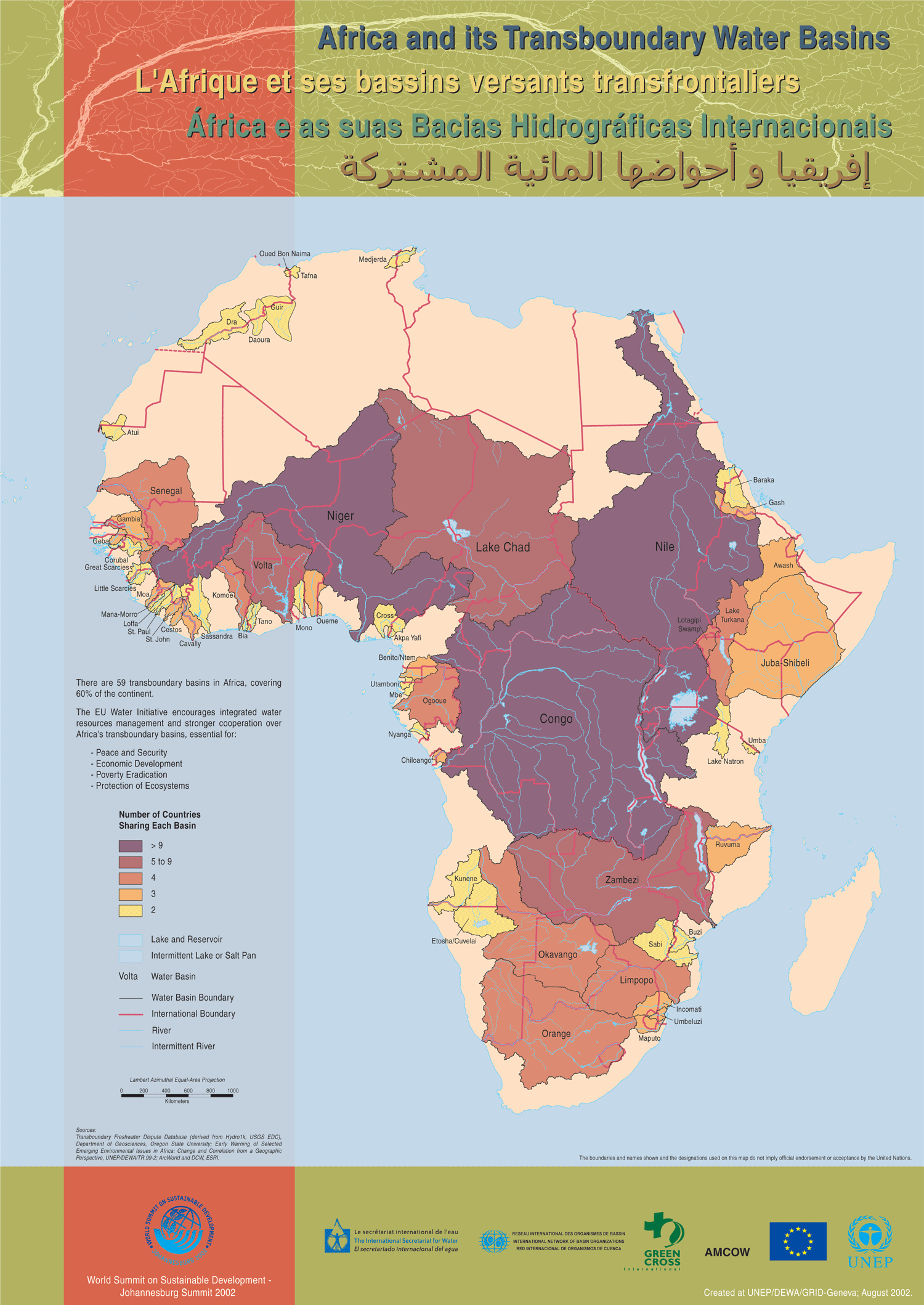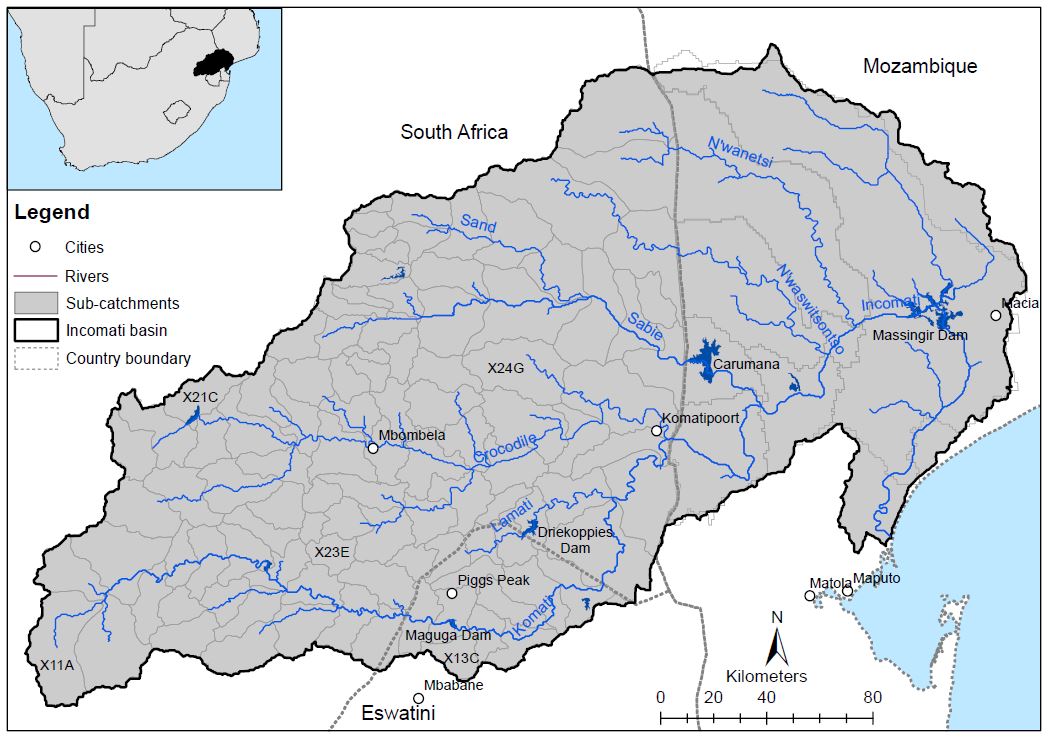Contesting Borders: Basins and International Boundaries
Previously I explored water dependency on local and national scales; however, I have yet to discuss the complexities of the form of water management that transcends geographical boundaries. A fundamental constraint to the sustainable management of water resources on the continent is the fact that 68 water basins are transboundary in nature (Kotzé 2022). The Nile and Congo basins exemplify such, with their boundaries transcending nine countries (see Fig 1) (Del Pietro 2002). While the utilisation of basin resources and provisioning services varies spatially, the lack of unified, international management strategies poses implications for water scarcity and conflict mitigation (Gaye & Tindimugaya 2018).

As emphasised by the African Development Bank Group (2022), environmental change will not necessarily decrease basin-wide water availability, but rather amplify disparities in water accessibility for constituent countries. The occurrence of droughts and unprecedented inundation events could severely imbalance water fluxes, with political tensions arising as a result. Alongside conflict, ineffective legislation could be detrimental to the resilience of freshwater ecosystems (Theron 2023).
Interdisciplinary Solutions to TWM
In consideration of the complexities underpinning transboundary water management (TWM), strategies must adopt an interdisciplinary outlook to yield sustainable outcomes. To illustrate, the UN-funded program on the Incomati Basin plans to implement a risk framework that prioritises water accessibility, biodiversity and livelihood stability (UN 2022). The approach ensures that legislation in Mozambique, Eswatini and South Africa is informed according to a unified framework that approaches water across sectors and beyond traditional territorial boundaries. Figure 2: Map of the transboundary Incomati River Basin (CCGIAR 2023)
An alternative initiative, Cooperation in International Waters in Africa (CIWA), emphasises the vitality of biodiversity research in transboundary water strategies (Theron 2023). The video embedded below presents an insightful overview of prominent water challenges faced by Lake Victoria and how CIWA adapts strategies to improve resilience through TWM.
Figure 3: Video exploring CIWA efforts to improve TWM of Lake Victoria (CIWA, 2023)
The management of transboundary water resources is vital towards ensuring equitable water provision and the fortification of water security. Furthermore, it is an integral component when considering climate justice. I look forward to exploring what denotes climate justice and how it should be approached in the water realm for my final blog post.



No comments:
Post a Comment